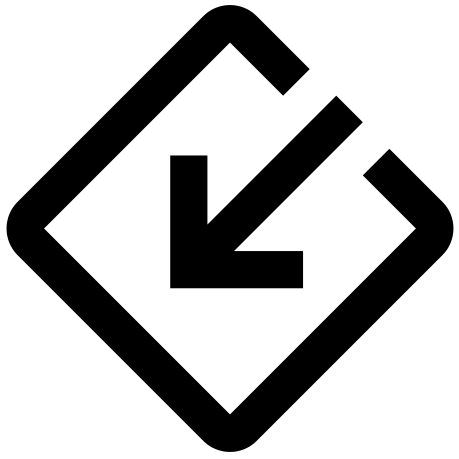dostęp otwarty
Wstępne wyniki leczenia ciężkiego niedoboru wzrostu u dzieci z młodzieńczym idiopatycznym zapaleniem stawów i niedoborem hormonu wzrostu
dostęp otwarty
Streszczenie
MATERIAŁ I METODY. Spośród 10 chorych (4 chłopców, 6 dziewcząt) w wieku 6-15,5 (średnia 12,2 roku) z niedoborem wzrostu [(-)7,7-(-2,4) SDS] do leczenia rhGH zakwalifikowano 5 chorych (2 chłopców, 3 dziewczynki) na podstawie wykazania u nich współistniejącego niedoboru GH. Wszyscy otrzymywali glikokortykosteroidy (GKS) w średniej dawce 0,08-1,4 mg/kg/24 h w przeliczeniu na prednizon, 3 chorych, u których zastosowano leczenie rhGH, oraz wszyscy nieleczeni rhGH otrzymywali ponadto lek blokujący czynnik martwicy nowotworu a (Etanercept).
WYNIKI. W pierwszym roku leczenia rhGH w dawce 0,03-0,06, średnio 0,047 mg/kg mc./dobę, uzyskano zwiększenie szybkości wzrastania z 0-3,2; średnio 1 cm/rok do 0,3-16; średnio 3,3 cm/rok, wzrost stężenia insulinopodobnego czynnika wzrostu typu 1 z 69,1-331,1; średnio 197,5 ng/ml do 335-716,9; średnio 526 ng/ml. W trakcie 16,6 pacjentolat (5 pacjentów, indywidualny czas leczenia 1,8-4,5; średnio 3,8 roku) w czterech przypadkach leczenie rhGH spowodowało zwiększenia wysokości ciała o 0,1-2,2 SD. U chorych nieleczonych rhGH nie obserwowano przyspieszenia wzrastania.
WNIOSKI. U chorych z JIA stosowanie rhGH w dawce zbliżonej do 0,047 mg/kg mc./dobę poprawia szybkość wzrastania i wzrost końcowy. Wyniki leczenia mogą się różnić u poszczególnych chorych z JIA i są tym lepsze, im mniejszy jest niedobór wzrostu w momencie rozpoczęcia leczenia oraz mniejsze nasilenie procesu zapalnego. Słowa kluczowe: młodzieńcze idiopatyczne zapalenie stawów, niedobór wzrostu, hormon wzrostu
Endokrynologia, Otyłość i Zaburzenia Przemiany Materii 2010, tom 6, nr 2, 67-71
Streszczenie
MATERIAŁ I METODY. Spośród 10 chorych (4 chłopców, 6 dziewcząt) w wieku 6-15,5 (średnia 12,2 roku) z niedoborem wzrostu [(-)7,7-(-2,4) SDS] do leczenia rhGH zakwalifikowano 5 chorych (2 chłopców, 3 dziewczynki) na podstawie wykazania u nich współistniejącego niedoboru GH. Wszyscy otrzymywali glikokortykosteroidy (GKS) w średniej dawce 0,08-1,4 mg/kg/24 h w przeliczeniu na prednizon, 3 chorych, u których zastosowano leczenie rhGH, oraz wszyscy nieleczeni rhGH otrzymywali ponadto lek blokujący czynnik martwicy nowotworu a (Etanercept).
WYNIKI. W pierwszym roku leczenia rhGH w dawce 0,03-0,06, średnio 0,047 mg/kg mc./dobę, uzyskano zwiększenie szybkości wzrastania z 0-3,2; średnio 1 cm/rok do 0,3-16; średnio 3,3 cm/rok, wzrost stężenia insulinopodobnego czynnika wzrostu typu 1 z 69,1-331,1; średnio 197,5 ng/ml do 335-716,9; średnio 526 ng/ml. W trakcie 16,6 pacjentolat (5 pacjentów, indywidualny czas leczenia 1,8-4,5; średnio 3,8 roku) w czterech przypadkach leczenie rhGH spowodowało zwiększenia wysokości ciała o 0,1-2,2 SD. U chorych nieleczonych rhGH nie obserwowano przyspieszenia wzrastania.
WNIOSKI. U chorych z JIA stosowanie rhGH w dawce zbliżonej do 0,047 mg/kg mc./dobę poprawia szybkość wzrastania i wzrost końcowy. Wyniki leczenia mogą się różnić u poszczególnych chorych z JIA i są tym lepsze, im mniejszy jest niedobór wzrostu w momencie rozpoczęcia leczenia oraz mniejsze nasilenie procesu zapalnego. Słowa kluczowe: młodzieńcze idiopatyczne zapalenie stawów, niedobór wzrostu, hormon wzrostu
Endokrynologia, Otyłość i Zaburzenia Przemiany Materii 2010, tom 6, nr 2, 67-71
Słowa kluczowe
młodzieńcze idiopatyczne zapalenie stawów; niedobór wzrostu; hormon wzrostu

 Informacje o artykule
Informacje o artykuleTytuł
Wstępne wyniki leczenia ciężkiego niedoboru wzrostu u dzieci z młodzieńczym idiopatycznym zapaleniem stawów i niedoborem hormonu wzrostu
Czasopismo
Endokrynologia, Otyłość i Zaburzenia Przemiany Materii
Numer
Strony
67-71
Opublikowany online
2010-07-12
Wyświetlenia strony
1024
Wyświetlenia/pobrania artykułu
3873
Rekord bibliograficzny
Endokrynol. Otył. Zab. Przem. Mat 2010;6(2):67-71.
Słowa kluczowe
młodzieńcze idiopatyczne zapalenie stawów
niedobór wzrostu
hormon wzrostu
Autorzy
Małgorzata Wójcik
Agata Zygmunt-Górska
Magdalena Wąs
Katarzyna Doleżal-Ołtarzewska
Jerzy Starzyk










